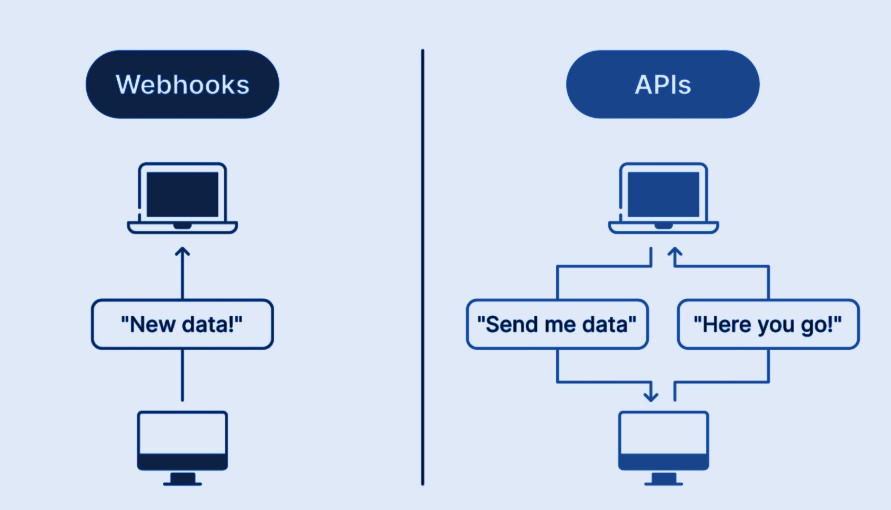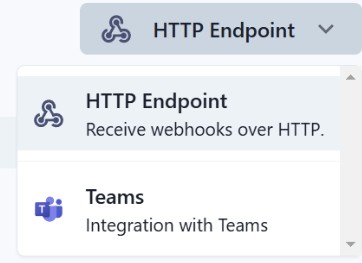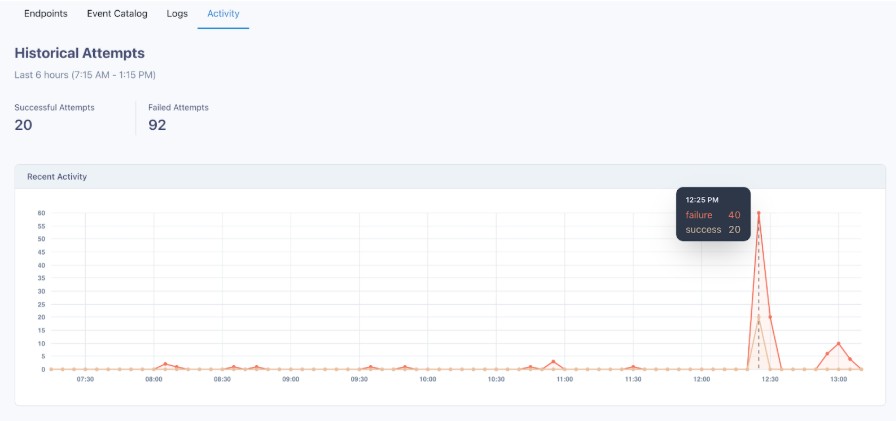Webhook Portal - Introduction

Introduction to Portal Features
One of the most common integrations with Windward’s platform is taking advantage of webhook notification as a method of triggering actions on your own system.
When a new activity is detected or a new insight becomes available, Windward will generate a webhook based on your predefined integration settings.
Previously, it was up to Customer success and Professional Services teams to set up integration in details. By using the new advanced features on the webhook portal you can now have granular control over each and every setting for a quicker initial setup and for any additional changes required over time.
The webhook portal also provides greater visibility and traceability so that real-time investigation can be performed more easily: review historical notification records, gather statistics and refeed webhooks on the fly.
Benefits
- Shorter setup time - You can define a single URL as the main endpoint to which Windward will send all webhook notifications. Any change in configuration can be done without involving customer success or support teams. A testing feature is also available within the portal to check the end-to-end integration process in a simple and friendly workflow.
- Modularity - Each activity payload can be easily modified using Javascript, editable directly from the webhook portal.
- Traceability - All the historical payloads are accessible and searchable with filter options, allowing you to easily update failed transmissions when needed.
- Multi-channel - Webhooks can be sent via HTTP (as typically applied ) or via direct integration with Microsoft Teams and other 3rd party platforms (such as SMS and Whatsapp). Additional integration will be available soon as presets.
How to use it
Once logged in to Windward’s platform, select the “webhook portal” tab on the top navigation menu. The portal includes 4 sub-tabs for different settings and exploration.

-
Endpoints
This screen shows the available endpoints’ URL defined for your project.
On the right end of each row is a reference to the error rate percentage calculated for all traffic generated to that endpoint.-
Creating a new endpoint
Based on your platform architecture, you can create additional endpoints which will receive specific webhook notifications based on defined criteria.
Click the “add endpoint” button on the right to open the settings form.

-
At the top of the form you can select an HTTP endpoint or use an integration with Microsoft Teams to push the notifications into a specific channel on your account.

-
Define the URL to which the webhook notifications are sent.
-
Add a description of the current usage (optional).
-
Select activities which will generate webhooks (checking multiple values from the provided list)
-
In the advanced configuration section you can define a rate limit if needed.
Once an endpoint is created, click it to open a detailed configuration screen.
Overview -
- show description and overall statistics counter.
Advanced -
-
Configure rate limit
-
Create “custom header” using Key-Value pairs (which increases security methods by allowing you to update authentication information in a self-service)
-
Create message transformation - using a Java Script snippet.
Testing -
-
This feature is not yet fully functional.
Message Attempt table below will include all messages associated with the selected endpoint, with different filter options on the right (by type, tag or schedule).
-
Event catalog
This catalog view is not yet fully functional.
All the available events are listed according to their group type.For details regarding the schema of each event, visit Windward online documentation center at:
-
Ocean Freight Visibility (OFV)
-
Due Diligence and Compliance
https://developer.windward.ai/reference/webhook-reference-1#/
-
Use the filter button to focus on a subset of messages by “event type”, tags and schedule.
-
Use the “Jump to Message” button to search for a specific message using the MSG ID as reference.
-

Click on a specific message to review details (payload and delivery attempts).
On the lower section, a table view will show recent attempts for this message delivery, including technical details on the response and header. In case a message needs to be refeed, use the menu on the right (፧) and click “send again”.
-
Activity
This screen shows a graph of all events sent in the recent time-frame, with a counter for successfully delivered and failed attempts. This provides a quick overview of the integration status in terms of trend detection and failure detection.

Need additional help with the setup?For further assistance, contact your Solution Architect POC or refer to the API documentation at https://developer.windward.ai
.
